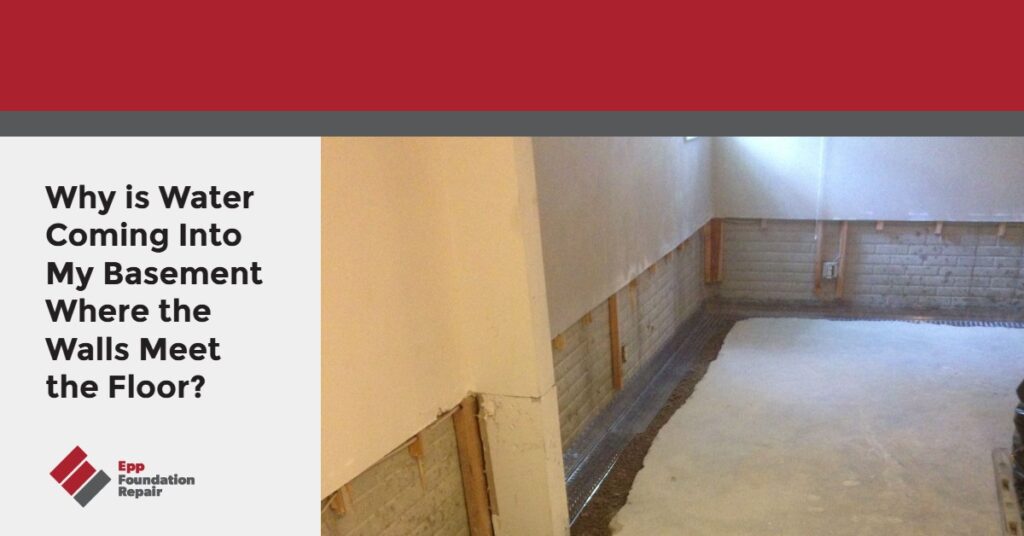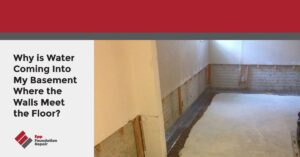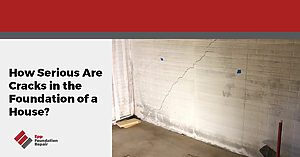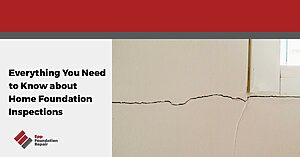Wondering why you have water coming into the basement where the walls meet the floor? If so, stick around because that’s what we’re going to talk about in this article.
Unfortunately, wet basements are pretty common. However, they’re not something you should just live with. Wet basements can damage both your home’s structural integrity and your health. So, a wet basement needs to be fixed.
In this article, we’re going to talk about the cove joint, where the basement wall meets the floor. You’ll learn why water sometimes comes through the cove joint and into the basement, why you can’t just seal the cove joint, the right way to stop water coming into the basement where the walls meet the floor, and more. However, before we do that, we need to talk about hydrostatic pressure.
What is Hydrostatic Pressure?
Hydrostatic pressure builds up outside foundation walls when there’s excess moisture in the soil around a foundation that can’t drain off. If hydrostatic pressure isn’t relieved via a good drainage system, it will exert tremendous force against the foundation wall. Eventually, the wall will start to bow inward and even crack.
Hydrostatic pressure will also push water through cracks in the foundation wall that aren’t visible to the naked eye. Hydrostatic pressure is something you don’t want in the soil around your foundation.
The Cove Joint: Where the Basement Wall Meets the Floor
The cove joint is where the basement floor meets the foundation wall and the footer. See the below graphic and note that the foundation (i.e., basement) wall, the footer, and the basement floor are three separate pieces. This is just the way houses are constructed.
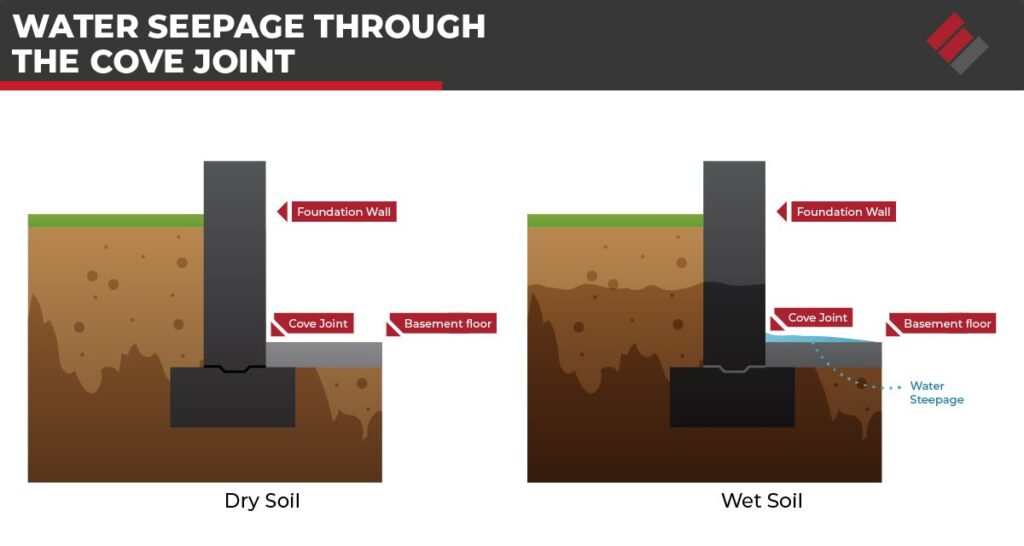
Why is Water Coming Into the Basement Where the Walls Meet the Floor?
The foundation wall, footer, and basement floor are three separate pieces. This is why water can find its way into the basement via the cove joint if hydrostatic pressure builds up in the soil around the foundation because of poor drainage. Hydrostatic pressure will push water in the soil through the cove joint and into the basement.
It’s important to note that this isn’t caused by any type of foundation problem. It happens because the foundation wall, footer, and basement floor are not fused together. They are three separate building blocks.
Signs of a leak through the cove joint are water on the floor and on the wall near the floor.
Can’t You Just Seal the Cove Joint?
No, merely sealing the cove joint will not solve the problem. If hydrostatic pressure has built up in the soil around the foundation, the water will simply find a new way into the basement. For example, if there’s a hairline crack in the foundation wall, hydrostatic pressure will push the water through it. Hydrostatic pressure could even push water through any seal you’ve created.
Water always finds a way. Therefore, the best way to stop water from coming into the basement where the walls meet the floor is to prevent the water from building up in the soil in the first place.
So, How To Stop Water from Coming into the Basement Where the Walls Meet the Floor?
Since poor drainage around the foundation causes hydrostatic pressure to build up and push water through the cove joint, the solution to the problem is good drainage. When there’s good drainage in the soil around the foundation, hydrostatic pressure won’t build up because there’s no excess water in the soil. The best way to ensure good drainage around a foundation is to install a drain tile system.
What Is a Drain Tile System and How Does It Work?
A drain tile system is a way of controlling groundwater around a foundation. A drain tile system makes sure any excess water in the soil has a way to drain off. This prevents hydrostatic pressure from building up and keeps your basement dry.
There are two types of drain tile systems: exterior and interior. An exterior drain tile system is installed along the outside perimeter of the foundation at the footer level. An interior drain tile system is installed around the inside perimeter of the basement wall. In both cases, a shallow trench is dug and lined with gravel. A perforated drainage pipe is placed into the trench and then covered with more gravel. Excess water flows into the drainage pipe and gets channeled toward a sump pit. Once the sump pit fills with water, a sump pump kicks in and expels the water away from the foundation.
For more detailed information about drain tile systems, see Basement Drain Systems: The Secret To A Dry Basement.
Drain tile systems are considered a gold standard for basement waterproofing. However, if you don’t want to pay for a drain tile system right now, there are some other things you can do to control groundwater around your foundation.
Other Ways To Keep Water From Coming Into Your Basement Where the Walls Meet the Floor
Apart from a drain tile system, there are other things you can do that will help keep water from coming into the basement where the walls meet the floor (i.e., through the cove joint). These include:
- Clean your gutters regularly – If your gutters are clogged with dead leaves and other debris, water could spill over the side of the house and into the soil around the foundation.
- Regrade your yard – Your yard should slope away from the foundation. If it slopes toward the foundation, water will drain toward the foundation. You don’t want this.
- Install downspout extensions – If your downspouts are too short, they’ll release water too close to the foundation. Extensions are inexpensive and easy to install.
- Install an underground downspout and pop-up emitter – Water from the gutter flows into the underground downspout and toward a pop-up emitter somewhere in your yard, about 10 feet from the foundation. When the pop-up emitter is empty, it’s barely visible. When it fills with water, it pops up and releases the water away from the foundation.
- Keep all vegetation away from the foundation – Flowers, shrubs, and trees look beautiful next to a foundation. However, when you water them, you’ll add more water to the soil. This is what you’re trying to avoid.

